





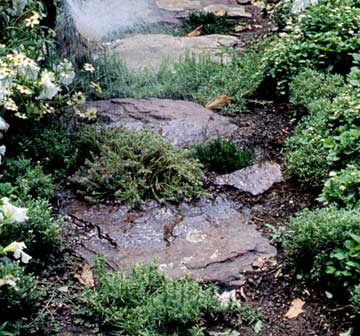
Structural elements such as patios, stone walls, and garden paths help set the tone or mood for a landscape. The English refer to these structures as the "bones" of their beds and borders. Creative gardeners often use these architectural elements as planting opportunities, allowing the flowers to decorate underlying structures.
Perennials that have evolved in rocky, mountainous regions are popularly known as alpine or rock garden plants. Many can grow easily in the cracks and nooks of stone walls such as some species of rockcress (Aubrieta), garden pinks (Dianthus), and soapworts (Saponaria). The flowers of these colorful plants naturally sprawl over stone walls while their roots flourish in cool crevices away from the sun's glare. Just half-fill with good garden soil, tap in your plant root, and then pack in the remaining dirt.
Many perennials are particularly lovely when carefully placed along a path. Take care to ensure that they do not overgrow the pathway.
One charming way to decorate a garden path is place fragrant herbs in selected spots. As they are stepped on, the herbs release their pungent fragrance. Perennials that can withstand such abuse include chamomile (Chamaemelum nobile), creeping mint (Mentha requienii), and various thymes, such as lemon thyme (Thymus x citriodorus) and caraway thyme (T. herba-barona). When creating your garden path, leave open spaces for these shallow-rooted plants and make sure that the drainage is excellent.
continue reading below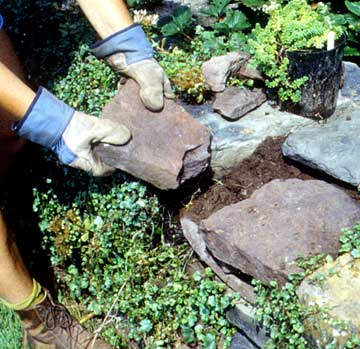 Step 1
Step 1
1. Remove a stone to open up a suitable planting space when planting perennials in a dry stone wall.
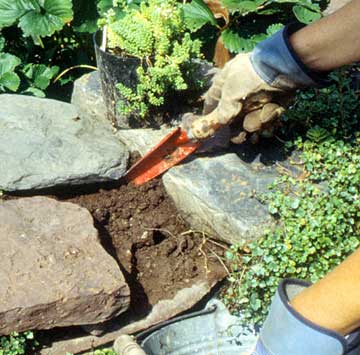 Step 2
Step 2
2. With a long-bladed trowel, scoop out the soil from the planting pocket and mix it with compost or other soil amendments.
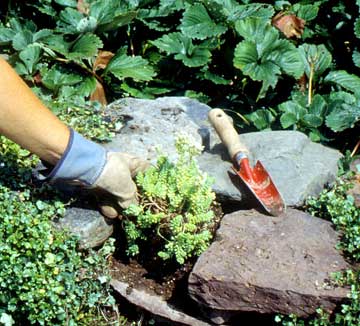 Step 3
Step 3
3. Position a small plant, such as this creeping sedum, in the hole and fill in around the roots with the improved soil mix.
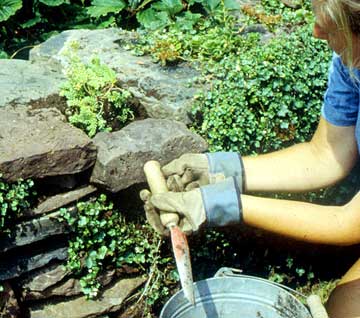 Step 4
Step 4
4. Replace the stone, tapping it into place with the handle of the trowel. Water with a fine spray over the stone and adjacent plant.
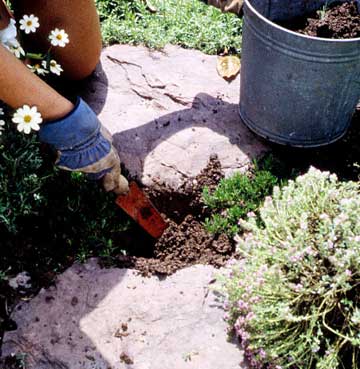 Step 1
Step 1
1. Small plants soften the look of your patio or path. Dig a planting hole between flagstones or remove a brick from the structure.
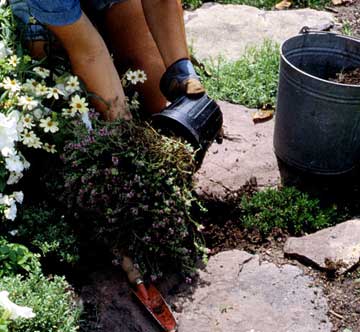 Step 2
Step 2
2. Mix a trowelful of good-quality soil into the bottom of the hole. Remove the plant form its container, keeping the root ball intact.
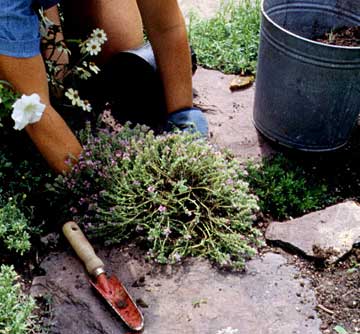 Step 3
Step 3
3. Set the plant in the hold and fill in around the roots with enough ordinary soil or compost-enriched soil to anchor the plant.
 Step 4
Step 4
4. When you have finished planting, water thoroughly, but with a fine spray that will not dislodge the new plants.
Copyright © www.100flowers.win Botanic Garden All Rights Reserved